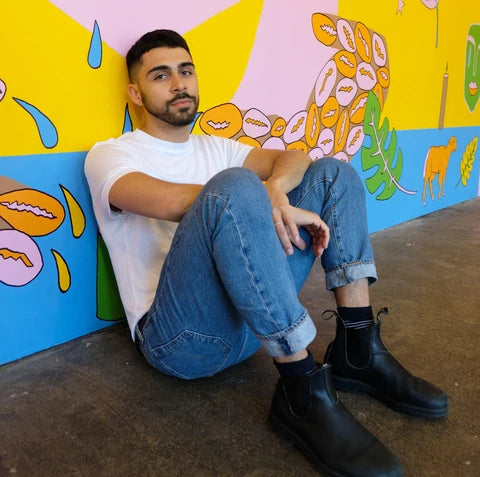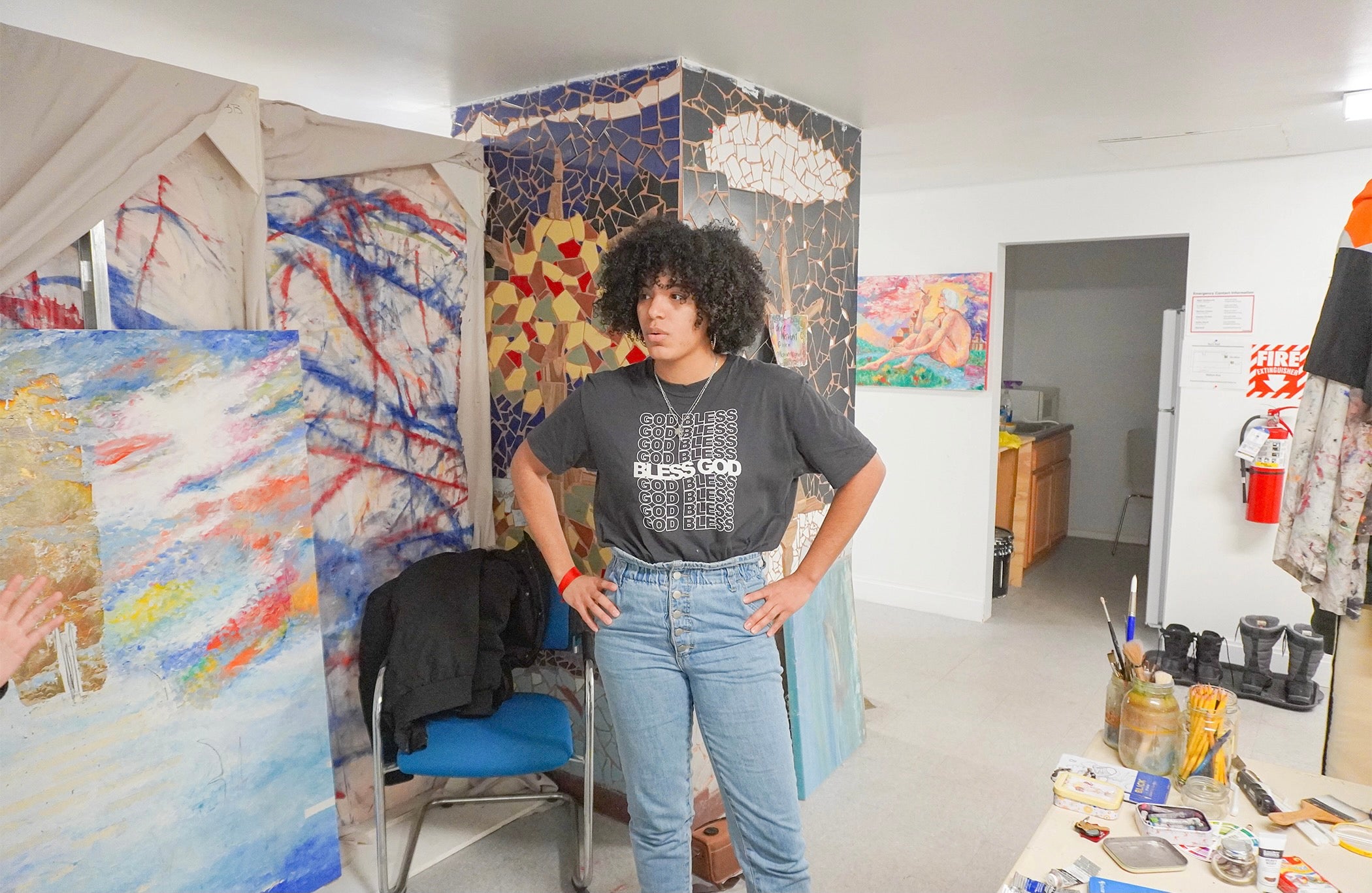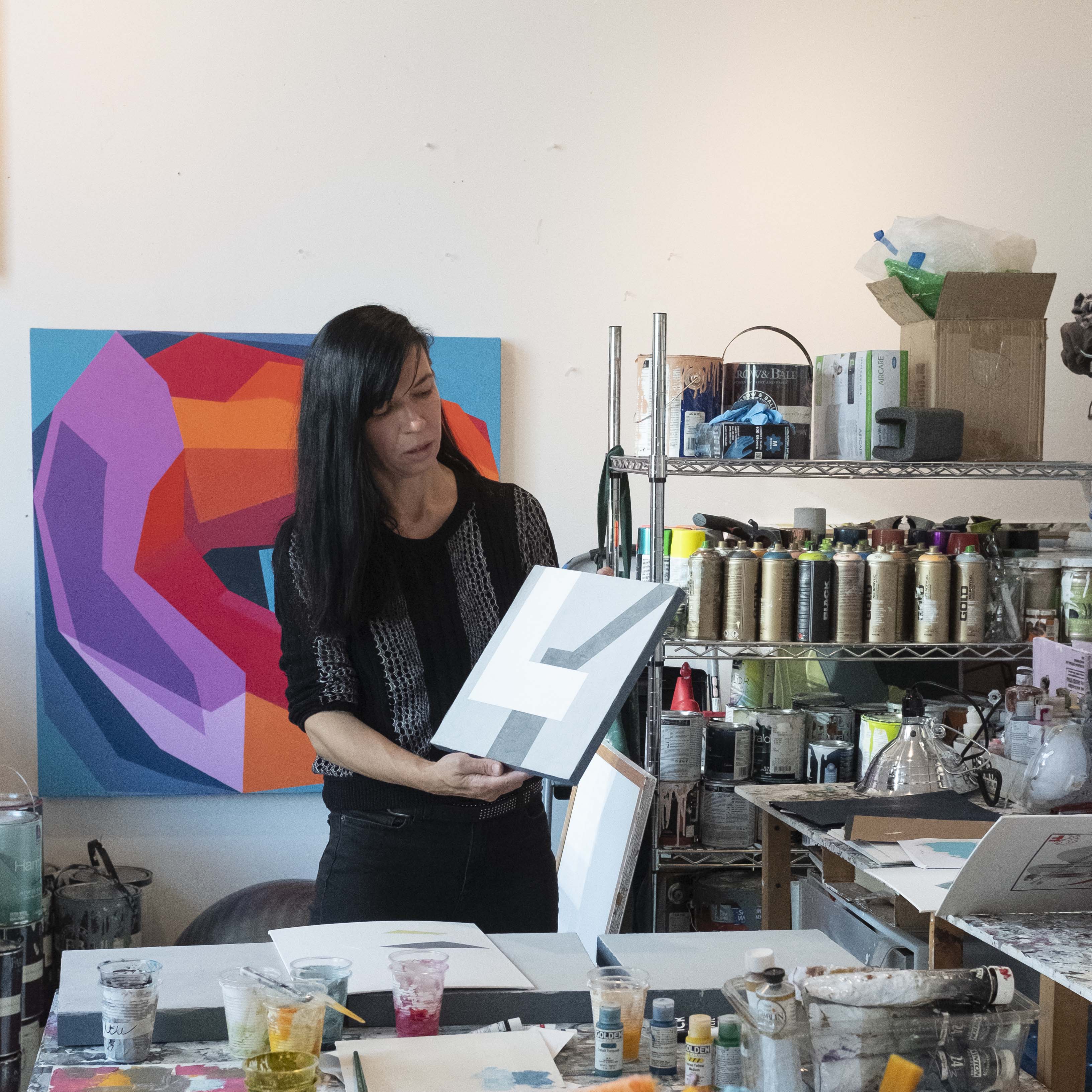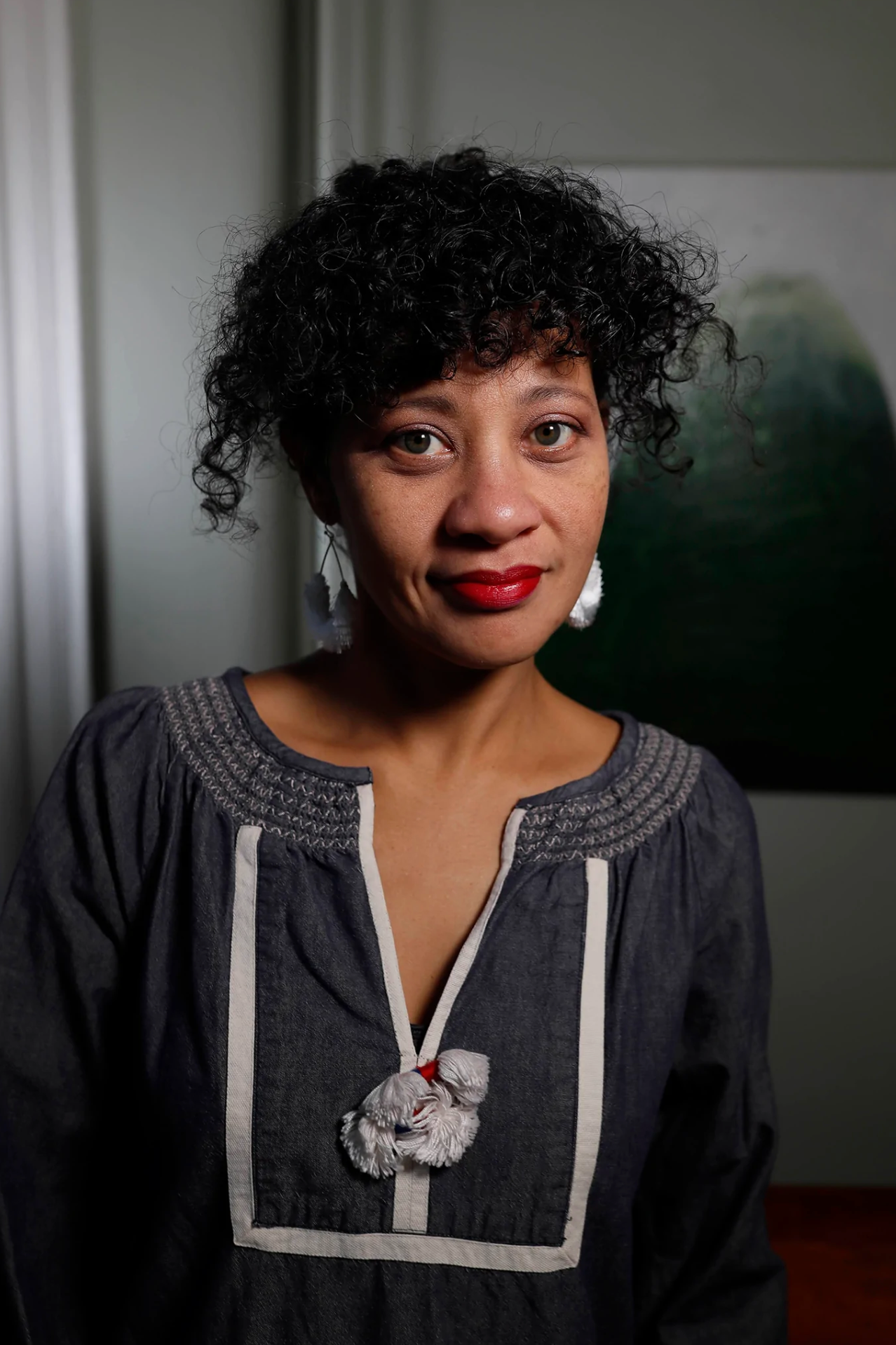No Products in the Cart
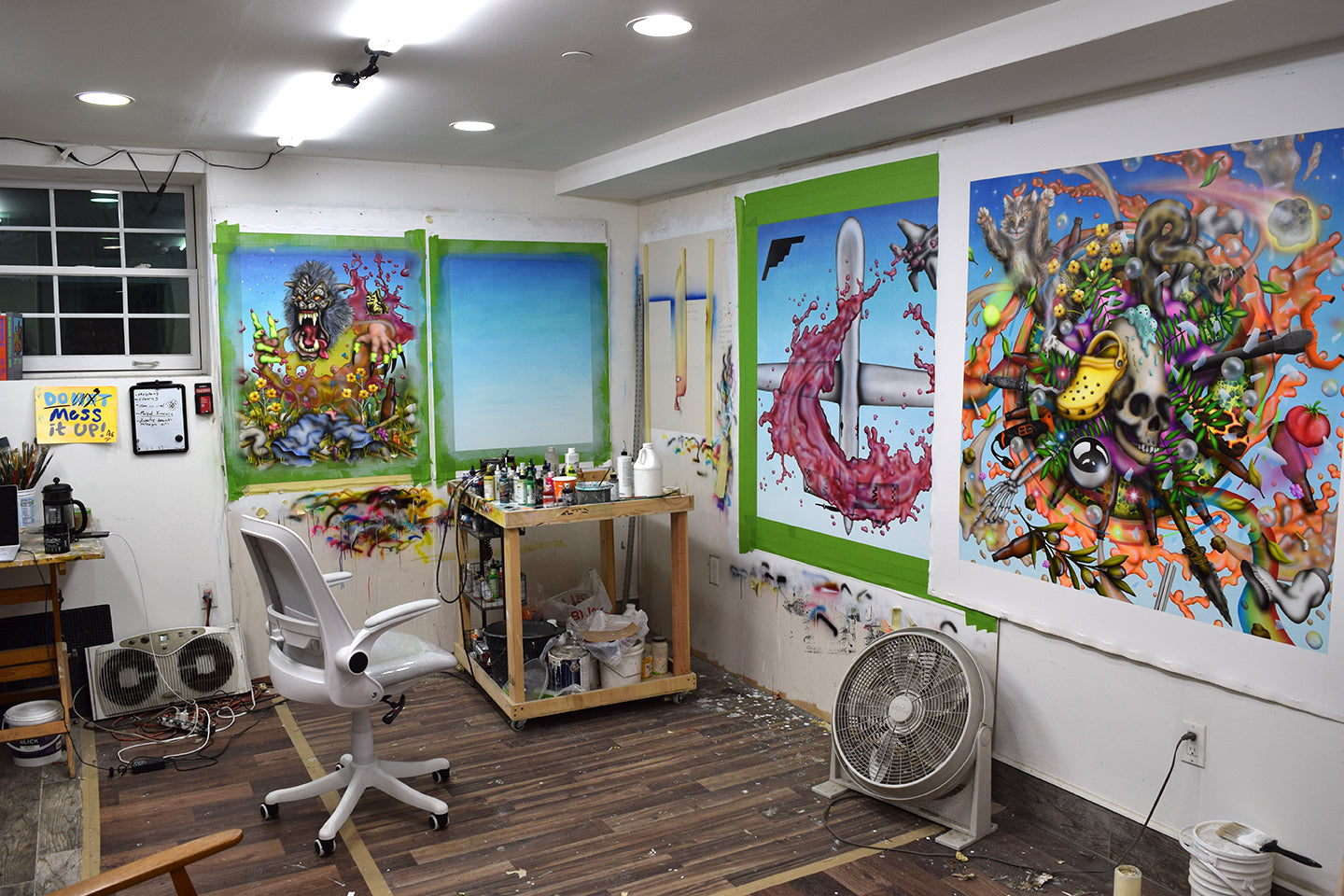
Meet Jon Duff

Hannah: What’s one part of your routine (either personal or creative) that changed permanently thanks to covid-19?
Jon: I moved right at the start of the pandemic - but not because of the pandemic - and my studio is in my basement now.
I have been getting a lot more time in the studio, since I don’t have to commute anymore. In the past I’d go straight to my studio after work and if I was lucky, I would get 4 hours in a night while starving for dinner. Now I’ve been able to put more time into each work and really develop them to a level I haven’t accomplished before.
Hannah: There has been a huge diaspora of artists moving out of New York. Do you feel attached to the city in any way? Any particular underrated/overrated things about it when it comes to resources for artists?
Jon: I think about this everyday now.
I’m from WI originally and it took me a lot of work to eventually get settled here. I’m not one of these die hard NYC fans that say “I could never live anywhere else!” and “The city will bounce back, it always does”. NYC is great, but it also makes some things ridiculously difficult, and without the galleries, museums and a working subway, I’m not sure some of the difficulty is worth it.
I came here for all of the art, but I also came here for the jobs. I feel like that gets overlooked a lot in the conversation about what draws artists to NYC. There are more jobs in the arts here than anywhere else. I kind of stumbled into my current position in the arts by necessity and I’m glad for it, but it wouldn’t have happened anywhere else. This is one of the few places where it’s feasible.
I don’t even think I ever heard the word "Preparator" until I moved here. I remember thinking it sounded like a goofy word someone had to make up in a hurry to define a position, but it sounded like a job I could do. Now I’m a curator and an artist. I can’t be sure, but I would bet against that happening if I stayed in Oconomowoc WI.

Hannah: Tell me a bit more about your new show OPE! at Mazel Galerie! May I ask what prompted you to connect to this particular gallery, or to Brussels?
Jon: They reached out to me a little less than a year ago, I think they found me on Instagram.
It’s been great to be able to spread out over to Europe. I haven’t been able to visit yet thanks to the pandemic. It looks like they have a really great scene over there. Unfortunately the opening reception got cancelled due to the pandemic and it sounds like Brussels is having a shutdown experience similar to NYC. I would have liked to make a bigger splash into the scene, but I’m just grateful to have the opportunity to get the work out and let it live in the world.
Hannah: That’s strangely validating, I thought I was being too millennial for using Instagram for research.
Jon: Instagram is huge! I realized that while I was working in Chelsea. Gallerists are on Instagram all the time, and it’s the main way galleries present themselves too. It’s the “main delivery system”, now.
Instagram and social media has changed so much though. When we started using it, we were complete oversharers. My friend sent me their Livejournal from years ago and it had all these personal moments. Now everything is branded and narrow, “I can’t complicate this with personal stuff, it has to represent a specific part of me”.
Hannah: Any adjustments you had to make because of the distance to the actual location of the show?
Jon: Communication can sometimes be an issue. For example in Europe they call everything on paper “drawings” and on canvas “paintings”, whereas for me, things drawn with paint are paintings! The differences in language and area is where the exhibition title comes from, actually! Everything I came up initially was too bleak, evidently - so then I thought, for my first show in Europe why not take a word from my area, the Midwest, where “Ope!” essentially mean“Oops!”
Mazel Galerie also convinced me to work on canvas. I used to work on paper because I don’t want to have to give a s**t about the surface or prepare it. The gallery offered to stretch the canvas for me, and I’ve been loving it.
Hannah: What’s terrible about your Terrible Architecture series?
Jon: I don’t know if other people really get this from my work or not, but my work is a personal response to the world as I experience it. Like most artists, I would assume, I’m translating my psychological experience visually.
This series began with me wanting to just let loose and make some abstract paintings in the form of landscapes, but the paintings inevitably began spontaneously taking on a life of their own, developed a personality and started representing something to me. Structures began to develop in the paintings and I saw these landscapes representing both a cornucopia of objects and an apocalyptic disaster.
And that apocalypse definitely includes the overabundance we currently enjoy. I heard the other day 70% of our economic experience is consumption, just selling and buying shit. If you start thinking about how sustainable - or unsustainable - that is, you get really scared. If you look at data, recycling is a trick, people don’t really recycle. It’s a lie to convince people that we can continue our current lifestyle.
Detail, Terrible Architecture 2
Certain types of architecture are “terrible” in a similar way. There is a lot of hubris in the structure of a skyscraper. Considering its cost and visual priority on a landscape, it generally stands for aesthetic and structural standards for that time. It stands as a representation of the dominant culture that built it. In the book “The Fountainhead” the skyscraper is used as a symbol of man’s dominance over nature.
But we have seen enough buildings accidentally collapse to not really consider it that way anymore, but the building still has an authority, a stand in for human accomplishment. I guess I use this as a starting point. Buildings fall down, societies decompose. I’m trying to remind myself and the viewer that what we are doing here so far is actually minuscule and fleeting in the history of this planet and even smaller, not even worth considering, at the galactic scale. We have the potential for great harm to this planet, but I like to think we at least try to do some notable things. As far as species go, humanity is a smart kid with behavioral issues.
Sorry getting off track. I use the term Terrible architecture to criticize humanity’s sense of accomplishment and to consider that what we are putting out as a society, at great speed I should add, represents us now and will be left behind to represent us later.
As a society, we could afford to be more critical about media and the other visual things we consume along with it. My girlfriend gets mad because we can’t watch TV without me criticizing every ad that comes up, haha. I really hope we don’t leave behind a graveyard of tacky architecture and plastic packaging. I really hope we are better than that in the end.

Hannah: Does the sense of crowdedness in your paintings give you a sense of satisfaction, like when I obsessively fill out a page with doodles?
Jon: That primal sense of satisfaction you’re talking about, I actually wrote my grad school thesis on that. It’s called “destructive play”. There’s a lot of studies of chimps engaging in destructive play, like breaking twigs or throwing rocks and testing everything around them. But when they gave chimps blank paper, they would fill it in to disrupt the original state of blankness.
But returning to me, boredom sucks. I don’t do this because I want to just complete something, I do it because I want to be surprised. It feels frustrating if it seems like I’m doing the same thing twice, or like I’m branding myself. I feel the natural urge to disrupt that. There was a time I dabbled in Minimalism, and I always felt like I was trying to execute something. I learned that the only way for me to get the “oh wow” feeling was through abundance.
Hannah: I was also interested in that abundance because it reminded of this theory that claustrophobic Medieval book art being motivated by the anxiety of blankness (“horror vacui”).
Jon: Oh man I feel like I could talk about this all day. I haven’t read that theory but I’m going to add it to my wish list today. That’s a really interesting concept. I think people still have a medieval anxiety of blankness. That is why we try so hard to explain and give meaning to everything. That is why Atheism is taking such a long time to gain equal representation in politics. That is why we looked at the woods in the past and filled it with witches and monsters. The idea of an uncontrollable and undefinable expanse scares people, but I think I try to take that anxiety in the other direction. Keep it uncontrollable but fill it with things we know or barely know. Like we filled the forest with too many witches and monsters and they are overflowing into everything we thought we had figured out. ok sorry going back to boredom.
My work has been getting progressively busier over the past couple of years. I always thought I would eventually make a work where I would think “whoop went too far with that one, I pull it back a little on the next one.” I always thought I’d find the limit, but the frontier just keeps moving. That keeps me interested, I feel like an explorer. I go into my basement and I’m discovering something new for myself each time I paint. But that expectation has negative consequences. Whenever I get stuck on something tedious in a work I get frustrated and wonder “If I’m going to be bored why don’t I just do something normal that makes a bunch of reliable money.” If I ever find myself making work that feels too branded or a repetition of a last work, I lose all my energy and completing the work just becomes slog, if it gets completed at all. Novelty fuels my practice.
Hannah: Art as individual vs. collective labor?
Jon: I think as an artist you need to find a way to justify what you do to yourself. What you’ve invested in your art, you’re probably never going to get back later in life. We live in a Star Trek replicator world now. We can get anything we want whenever we want, so how do we keep ourselves interested in being alive? Have you ever seen the movie Zardoz with Sean Connery? It’s a postapocalyptic world where 1% of the people are immortal and can anything they want - but there’s a barn where they keep everyone who’s fallen into apathy and lost all will to live. They’ve become comatose.

So to be able to come down to this basement where something completely unexpected happens, even in the time we’re all stuck at home, is extremely necessary to my own psyche.
Hannah: The Internet never stops being fascinating and suspicious to me. Like a good conspiracy theory. What’s the relationship between the supernatural and the digital to you?
Jon: I love that question. I feel like I would want to have a conversation just devoted to this idea. I grew up with some serious conservative Catholic dogma coming from my Dad, so I later I pushed away supernatural, religious, spiritual things for a long time, but they kiiiind of made their way back. I started a little research into chaos magic for a curatorial proposal and realized how much of what we do in our daily lives are rituals for the sake of getting an outcome. Studio process and our relationship to ART had a lot in common with our relationship to magic and alchemy. Art can have power over us, but there are many contingent issues that decide whether or not that is possible. Historical knowledge is a big one, but context and belief are the biggest factors. Duchamp showed us that.

Reality is totally malleable in the internet realm in a similar way to magic, but in an even spookier way. I think of cyberspace sort of like hyperspace in star wars. It can be used as a way to bypass reality. When you really think about it an email is a spell. You combine the correct words in the right order to affect the world. You can will others to do your bidding, you can even conjure items to appear at your home as long as you make the correct monetary sacrifice. We can see it having a profound effect on our society currently with these misinformation agents and MANGA Trolls basically using chaos magic to disrupt anything they seem to infect.

When I started painting portals, like Cheeto Portal on Curina, this is how I see Amazon delivery points. There’s a Star Trek episode called City on the Edge of Forever that has a portal shaped just like that. I saw that and was like, we’re living in super sci fi times, but it seems so normal to us now! Only through absurd abundance will it be clear to us how goofy it really is.
Hannah: Apparently you don’t want to party with the Olsen twins (!!) Who would you like to party with?
Jon: I bet they would be so boring to party with. Don’t you? I don’t know, maybe they are into astral projection or something. I don’t really know anything about them. Mary-Kate, Ashley, If you’re reading this, I meant no slander with my previous statements. You were just my go to celebrities for some reason. I mean that should be a compliment really. I think some people find the rich and famous to be so interesting that they enjoy any opportunity to interact with them. I wouldn’t even be able to speak the same language. I want to party in a haunted cave with some UFO investigators, a biologist, a physicist, whoever invented Velcro, the banjo kid from Deliverance, three artists and a real cowboy. Maybe I should start a residency.
Hannah: I often tell people that “I don’t have the right brain for making art”, to which everyone tells me “but curating is a creative activity on its own”. I wonder if they say that to console(?) me. How would you describe straddling both artist and curator roles? Where do they overlap and where do they diverge?
Jon: Haha yeah they might be trying to console you. I think artists need the consoling though. Making art is one of the most irrational things you can do. I make goofy stuff and try to convince people it’s important. To be an artist you first need to want it enough to spend most of your money and time with an extremely high risk of never making it back. You put yourself in a perpetual state of self-criticism. I feel addicted to it. It’s like a disease. I’m always chasing that feeling of personal accomplishment of doing something new. It’s an “Oh wow!” moment that lasts an evening and then I start a new painting.
Being both an artist and a curator allows me to relate to the artists I am working with. Usually the conversations in the gallery during installation are really mundane and the decisions about artwork placement are agreed upon with quick facial expressions. Obviously I’m picking out artists that make work I really appreciate so we already get each other based on taste making things easier. I let the artists drive most of the show during installation. I provide insight on the physical space and how people will most likely interact with everything, but I let artists make the big decisions when it comes to how they are being represented. I want to facilitate their art, not take credit for it. I don’t see the job as a curator as an art, but it definitely has informed some of my professional decisions as an artist.










